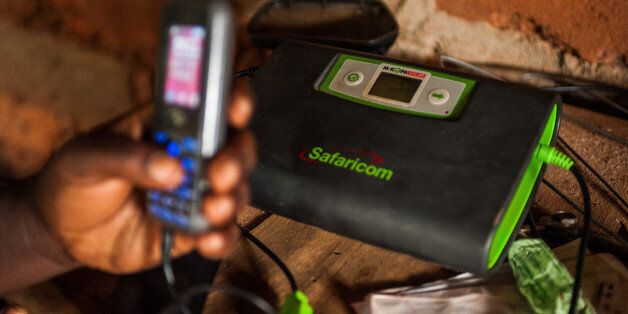
Back in 2009, a global consortium of researchers published a report with a provocative title, "Half of the World is Unbanked". Five years later, the numbers had already dropped by 20%. Yet close to 2 billion adults globally still do not have access to formal financial services. They remain financially disconnected, without opportunities to increase their incomes, unable to securely save for a rainy day or borrow to improve their lives.
Even basic financial products and services remain out of reach for these people. An illness, accident or a death in the family can spell disaster for their financial situation and cause powerful shocks to their daily lives. These hundreds of millions are effectively locked out of a world which you and I take for granted. It does not have to be so.
Thanks to the ubiquity of mobile phones, rapid advances in technology and better availability of data, true financial inclusion is within our reach.
But challenges remain. Not just in terms of access, but also in terms of products and services that are cost effective, scalable and within reach.
Technology can help along each of these dimensions. Thanks to mobile connectivity, reach is rapidly becoming a non-issue. But the real difficulty - and an area with significant potential for innovation and creative approaches - is in offering suitable products and services. Some of this is already happening.
Promising innovations include behavioural 'nudges' that encourage savings and good financial habits (budgeting, planning for the future etc.). The SEED account in the Philippines, for instance, was deliberately designed so that account holders cannot withdraw from the account until a goal date or threshold is reached.
Similarly, the Jipange KuSave experiment in Kenya was squarely aimed at the twin problems that the poor face: lack of liquidity and inability to save. It created a "lend-to-save" model, under which clients would take an interest-free loan, of which a third was kept aside in a savings account. Although the experiment unfortunately could not scale, it sparked further innovation in financial inclusion.
Non-financial risk profiles have also been fertile ground for innovation. Across the world, innovative lenders and financial institutions have expanded the scope of financial services by designing risk profiles based on non-traditional (and non-financial) data that enables effective credit scoring. Such scoring can then be used to 'lend' a range of things, from "airtime" to housing loans for those on informal incomes.
Other innovations include the emergence of pay-per-use models for services such as energy and water (in the form of Water ATMs). M-Kopa's affordable payment plans for example, have enabled more than 400,000 households in Kenya, Tanzania and Uganda to benefit from kerosene-free lighting. Along the way, the company has created employment for 2,500 people.
Alongside these models have emerged a whole class of "micro" products: low cost, more accessible and more relevant to the needs of the base of pyramid populations. These include not just micro-credits and micro-loans but also micro-insurance and micro-pensions.
And then of course you have Blockchain - an emerging technology that has the potential to radically transform financial services, spawn innovative business models and bring transaction and service costs down to a level where they are no longer a barrier for even those earning a few dollars a day.
Startups that are trying to leverage this technology include Abra, for low-cost remittances, and Monetas. This is only the beginning though. Expect more - a lot more - activity in this space in the years to come.
Finally, there is the promise of digital technology that can connect the unbanked to existing financial infrastructure and services. While advantages of digital payments have been well known for several years, daunting technology barriers have impeded any headway until recently.
That may be changing. India, for instance, has unveiled some bold and radical policy measures to catalyse financial inclusion leveraging technology. These include, among others, the development of IndiaStack, introduction of UPI and launch of Mudra Bank. Such moves have already led to the introduction of innovative services such as five-minute loans and paper-less KYC.
For all its advantages though, digital technologies still lag cash on several dimensions, especially when it comes to populations at the base of pyramid. They cannot really compete with cash on ease of use - or convenience. In some cases, they may simply be unaffordable.
Today, there is a massive opportunity for fintech to be a powerful force in development and affect fundamental transformation around the world.
Next to basic needs, access to finance can be a transformative for people at the base of pyramid.
Basic financial services and products can not only help the vast numbers of unbanked have more control over and make better use of their assets, it can also help reduce income inequalities and accelerate economic growth across the world.
In the efforts to accelerate global social development, fintech can be a powerful tool. Truly a "Tech for Good".